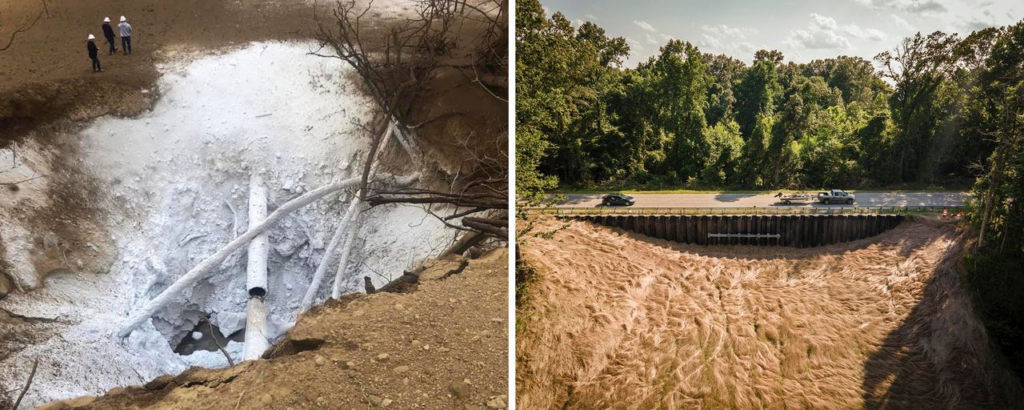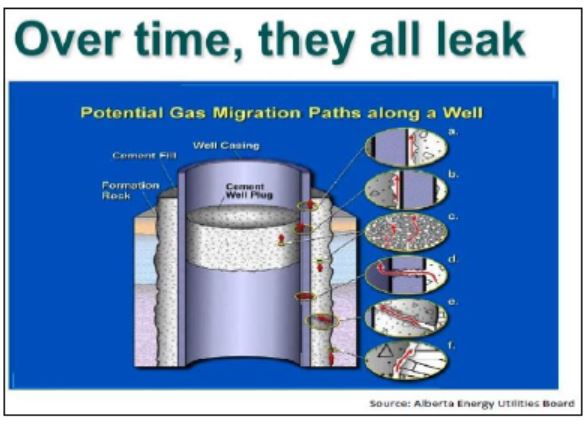Nigel Bankes@NdbYyc1305 April 5, 2024:
Manitoba introduced legislation April 4 to facilitate the adoption of carbon capture and storage projects in that province. The Captured Carbon Storage Act.
For Immediate Release, April 5, 2024
| Contact: | Victoria Bogdan Tejeda, Center for Biological Diversity, (510) 844-7103 x 303, email hidden; JavaScript is required Ileana Navarro, Central California Environmental Justice Network, (559) 907-2418, email hidden; JavaScript is required |
Jim Walsh@jimrwalsh:
Great to see EPA taking a hard look and stopping this CCS project from moving forward
When you take a hard look at these carbon capture scams you see lies, greed, and harms.
Carolyn C. Barthel@carolyncbarthel:
Such wonderful news! I’m THRILLED the @EPAMichaelRegan @EPA is not being railroaded into accepting these CCS scams.
Barbara W Brandom@BarbaraWBrandom:
Pennsylvanians![]() everyone!!!!
everyone!!!!![]() , listen to this. CCS is dangerous to you!
, listen to this. CCS is dangerous to you!
Dr. Sandra Steingraber @ssteingraber1:
NEW: A major carbon capture and storage project in McFarland, CA is dead after discrepancies between the company’s EPA application and how the company described the project in its local land use application came to light.
CCS is dangerous and unhelpful.
Biomass Carbon Capture Project Canceled in California’s Central Valley
Company Withdraws Permits Under EPA Scrutiny
MCFARLAND, Calif.— A major biomass and carbon capture and storage project slated for California’s Central Valley abruptly ended this week after the company, under scrutiny from the U.S. Environmental Protection Agency, withdrew federal and local permits.
Last week the EPA ordered San Joaquin Renewables to either withdraw its carbon dioxide injection permit or face cancelation because of discrepancies between the company’s EPA application and how the company described the project in its local land use application.
Residents and environmental advocates fighting the project learned Thursday that the company had pulled both its EPA permit and the city of McFarland land use permit for the proposed project. With no applications left, this marks the end of the project that was first proposed to regulators in 2021.
“The EPA showed exactly the kind of carbon capture scrutiny we need by ordering this project to withdraw its permit,” said Victoria Bogdan Tejeda, an attorney at the Center for Biological Diversity’s Climate Law Institute.
“Carbon capture and storage is a dangerous distraction from real climate action. We need our government officials to put these projects under the microscope, ask tough questions, and refuse to rubberstamp them. If this project ever resurfaces, we’ll be there for the fight.”
San Joaquin Renewables told the EPA that it planned to inject up to 1,200 tons per day of carbon dioxide waste under its property, located just two miles from McFarland. Modeling showed the injected carbon dioxide impact area stretched far beyond the injection site, even reaching into the nearby town of Delano.
Carbon capture and storage, or CCS, compresses carbon dioxide, turning it into an asphyxiant. A leak can harm and even suffocate people and animals, even those far away from the leak.
The project also proposed relying on a new gas-fired power plant to supply its operations. McFarland, as with much of California’s Central Valley, has some of the worst air quality in the country.
“It’s a great win for the community of McFarland for San Joaquin Renewables to no longer be moving forward with their polluting biomass with carbon capture facility,” said Ileana Navarro, a community organizer at Central California Environmental Justice Network.
“We found most residents were either unaware of this dangerous project being proposed just two miles from their homes, or completely opposed to it.”
“No amount of money would ever be enough in exchange for our safety,” said Beatriz Barron, a McFarland resident. “We’re glad to see this project canceled.”
This withdrawal marks the second time a CCS company has wasted government resources by submitting a deficient permit application. In April 2022, Clean Energy Systems withdrew their carbon injection permit application with the EPA after the agency ordered it to do so.
The Center for Biological Diversity is a national, nonprofit conservation organization with more than 1.7 million members and online activists dedicated to the protection of endangered species and wild places.
Refer also to:

LEFT: The CO2 pipeline rupture. RIGHT: Vehicles pass over the pipeline explosion site in Satartia in July. Yazoo County Emergency Management Agency/Rory Doyle for HuffPost
2012: CO2 in Stream, Dead Ducks Prompt Wyo. DEQ Citation against Anadarko
The leak happened in an area where CO2 is injected underground to help revive an old oil field and boost oil production. The Wyoming Department of Environmental Quality has ordered Anadarko Petroleum to identify and control the carbon dioxide leak into Castle Creek in central Wyoming. The Casper Star-Tribune reports…DEQ also is telling Anadarko to monitor the stream’s acidity until three consecutive tests show normal pH. A state violation notice says company officials identified a nearby carbon dioxide injection well as the possible source of the leaking gas. Anadarko spokesman Dennis Ellis says Anadarko hasn’t yet verified where the gas originated.
2012: Peer reviewed PNAS paper: Earthquake triggering and large-scale geologic storage of carbon dioxide
Despite its enormous cost, large-scale carbon capture and storage (CCS) is considered a viable strategy for significantly reducing CO2 emissions associated with coal-based electrical power generation and other industrial sources of CO2. … We argue here that there is a high probability that earthquakes will be triggered by injection of large volumes of CO2 into the brittle rocks commonly found in continental interiors. Because even small- to moderate-sized earthquakes threaten the seal integrity of CO2 repositories, in this context, large-scale CCS is a risky, and likely unsuccessful, strategy for significantly reducing greenhouse gas emissions
2012: The evaluation of CO2-based vapour extraction (VAPEX) process for heavy-oil recovery
Vapor extraction (VAPEX) has been proposed as an alternative for heavy-oil recovery in reservoirs where thermal methods face technical and economic problems. In VAPEX, a pair of horizontal injector-producer wells is employed. The gaseous hydrocarbon solvent (normally propane or a mixture of methane–propane or propane–butane) is injected from the top well and the diluted oil drains downward by gravity to the bottom producer. Recently, the idea of incorporation of CO2 into the gaseous hydrocarbon mixture has emerged. Incorporation of CO2 is believed to make the process more economical and environmentally and technically attractive. … The objective of this work, therefore, is to simulate the performance of the VAPEX process when different solvent mixtures, including hydrocarbon gases and CO2, are incorporated with the aim of improving its performance.
2008: Bachu, S., Buschkuehle, B.E., Haug, K. and Michael, K. (2008): Subsurface characterization of the Edmonton-area acid-gas injection operations; Energy Resources Conservation Board, ERCB![]() Now AER
Now AER![]() /AGS Special Report 92, 134 p.
/AGS Special Report 92, 134 p.
… From Page 88:
Figure 59 shows the extent of the Acheson original Blairmore T and subsequent St. Albert-Big Lake Ostracod A pools, and of the Strathfield (undefined) gas reservoir in the context of lithofacies changes in the Lower Mannville Basal Quartz and Ellerslie formations. When approval was granted for acid gas injection at Acheson, the regulatory agency required the operator to file annually with EUB and each other operator in the Acheson Blairmore T and St. Albert-Big Lake Ostracod A pools progress reports that “shall include the impact of acid gas injection on the performance of offsetting producing wells”. In March 2004 the operator at Acheson reported that CO2 was detected in 2003 in well 10-22-53-26W4 in the St. Albert-Big Lake Ostracod A pool, located at 3,625 m north from the acid-gas injection well. No H2S has been detected in the produced gas. Since at Acheson the average composition of the acid gas is 87% CO2 and 11% H2S (Table 14), with H2S being denser and more viscous than CO2, it is expected that CO2 would show first at a producing well. In addition, diagenetic processes within the reservoir could have reduced the H2S concentration in the injected acid gas as a result of pyrite precipitation, if an iron source was available. The issue was brought to EUB’s attention and was heading to a hearing, but the operator at Acheson has indicated to the regulatory agency that it has initiated an Appropriate Dispute Resolution process with the operator of the offset producing well to address the issue of CO2 breakthrough, and that this situation “will be addressed pursuant to the terms of the Mediated Settlement Agreement”.![]() To gag the harmed?
To gag the harmed?![]()
This case shows that, after 13 years of injection, CO2 has migrated northward a distance of [nearly 4 km] mostly under the combined drive of injection and production.
The drive into the St. Albert-Big Lake Ostracod A gas pool has increased lately with the large spike in gas production from this pool (Figure 57b). There are five producing wells much closer to the acid-gas injection well (Figure 59) that did not report CO2 breakthrough, but these wells are owned by the same operator that operated until recently the Acheson acid-gas injection site. If acid gas broke through at any of these wells, it is most likely that the operator just stripped the acid gas from the sour reservoir gas and re-injected it, as the produced gas in this area is sour to begin with. Understanding the migration path and fate of the injected acid gas at Acheson requires a separate study that is beyond the scope of this report. …
2007: Presentation on above 2006 paper Factors Affecting or Indicating Potential Wellbore Leakage by Watson and Bachu at the Alberta regulator, AER (when it was EUB), no less!
2006 May: The Role of the Upper Geosphere in Mitigating CO2 Surface Releases in Wellbore Leakage Scenarios
2006 June: Possible indicators for CO 2 leakage along wells by Bachu and Watson, 8th International Conference on Greenhouse Gas Control Technologies, Trondheim, Norway
… Storage safety refers to the potential harm to other resources, equity and life that a CO2 leak may entail.
The probability and effects of leakage from CO2 storage sites need assessment by both the operator and regulatory agency during the application and permitting process, during the operational phase and after site abandonment [3].
Any fluid in the subsurface, especially a buoyant one like CO2, will migrate laterally within the injection unit and may leak upwards across formations through faults and fractures and/or defective wells [1, 4].

The potential for CO2 leakage through fractures and faults can be well managed through proper geological characterization and selection of the storage site, and through proper operating procedures.
Managing the potential for CO2 leakage through wells is more difficult.
Exploration and production wells have been drilled, completed and abandoned since the middle of the 19th century, with variable technology and materials, and with no or under variable regulatory regimes. Well materials (cements, steel, elastomers, etc.) will or may degrade over time, particularly in the presence of corrosive agents such as saline formation water and CO2 [5, 6]. Thus, the potential for leakage through existing wells needs to be assessed for site selection and remediation. New wells will also be subjected to the same in-situ conditions as the existing wells.![]() Dr Tony Ingraffea subsequently found new wells to be worse leakers than older ones, which makes sense given the oil and gas industry’s relentless greed, lies, and demanding deregulation which has been consistently granted by our deregulators, notably Alberta’s “No Duty of Care” legally immune bullying shameless AER.
Dr Tony Ingraffea subsequently found new wells to be worse leakers than older ones, which makes sense given the oil and gas industry’s relentless greed, lies, and demanding deregulation which has been consistently granted by our deregulators, notably Alberta’s “No Duty of Care” legally immune bullying shameless AER.![]() …
…
